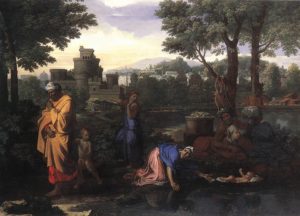CONFERENCES
healing attachment trauma
THREE DAY CONFERENCE
with Dr MARTIN DORAHY, Dr DION NOWOWEISKI, DR STEPHEN ARTHEY & DR HENRY LUIKER¹
2 – 4 NOVEMBER 2018, Novotel Central, SYDNEY
In the last decade, the sophisticated science-based understanding of the emotional mind/brain in treatment, emerging from the work of Allan Schore, Daniel Hill, Efrat Ginot and many others, has allowed the identification of “core” aspects of psychodynamic theory. These “core” aspects pertain not only to the negative sequelae of attachment disturbance on psychological symptoms and our capacity for relationships and intimacy, but also to specific treatment techniques which promise to reverse these life-long effects.
At the same time, there is an emerging empirical literature on the “common factors” of effective psychotherapy. For example, observational studies of very effective CBT practice have identified the presence of relational and emotional factors not found in CBT theories of change but readily recognizable to dynamic psychotherapists.
More than eighty years after the publication of Freud’s therapeutically pessimistic Analysis Terminable and Interminable, this conference addresses the following questions:
1. Are we there yet? Are we now in a position to spell out in an objective manner the therapeutic techniques that have the power to heal the effects of specific types of early emotional trauma and neglect?
2. Can these techniques, and their therapeutic impact, be demonstrated in videos of work with real clients and thereby be subjected to critical study in the full light of day?
The presenters approach these questions from four separate but intersecting perspectives.
- Dr Martin Dorahy (University of Canterbury, New Zealand) Abuse, neglect and the development of self
- Dr Dion Nowoweiski (Melbourne Centre for ISTDP) Identifying and applying the common factors of psychotherapy in a short term dynamic psychotherapy model
- Dr Stephen Arthey (Melbourne Centre for ISTDP) The first meeting: laying the foundations for an effective psychotherapy
- Dr Henry Luiker (Parks Clinic, Sydney) Identifying and overcoming obstacles to learning and teaching dynamic psychotherapy
Each of the papers will be anchored by treatment videos. Each day ends with a plenary session conducted by Dr Luiker; this is an opportunity to discuss, reflect on and think together, with all conference members in a circle, about the scientific and clinical material presented, including the emotional impact of the latter. All registered mental health professionals and post-graduate students conducting psychological treatments under supervision are welcome. For further inquiries, please contact the conference administrator Dr Luiker admin@istdp-sydney.org
Dr Martin Dorahy is a clinical psychologist and professor in the Department of Psychology at the University of Canterbury, Christchurch, New Zealand. He is immediate past president of the International Society for the Study of Trauma and Dissociation. His published work has primarily examined the adult outcomes of child relational trauma.
Dr Dion Nowoweiski is a clinical psychologist and a board approved supervisor from the Melbourne Centre for ISTDP. He completed his core training in Intensive Short-Term Dynamic Psychotherapy (ISTDP) with Dr Allan Abbass in 2012. He has also contributed to peer-reviewed publications on the application and theory of ISTDP. His Melbourne-based core training in ISTDP is certified by the International Experiential Dynamic Therapy Association (IEDTA) and is a certified IEDTA teacher/supervisor. He has developed a unique style of teaching that helps people integrate the elements of ISTDP into their current psychotherapy practice.
Dr Stephen Arthey is a clinical psychologist at the Melbourne Centre for ISTDP. He has received extensive training and supervision in Intensive Short-Term Dynamic Psychotherapy (ISTDP) and published peer-reviewed articles on the theory, application and effectiveness of ISTDP. He is accredited by the International Experiential Dynamic Therapy Association (IEDTA) as both a Teacher and a Supervisor for training in ISTDP. His ISTDP Core Training Programs in Australia and New Zealand are also accredited by IEDTA.
Dr Henry Luiker completed core training in ISTDP with Dr Stephen Arthey in 2014. In 2017 he conducted with Dr Leone Baruh, vice-president of IEDTA, a workshop for ISTDP trainees in Bologna, Italy, focusing on the emotional impact of the viewing of clinical videos, on trainees and the training institution.
